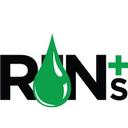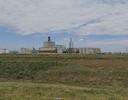A New Acid for Your Biodiesel Process

January 19, 2016
BY Joseph Borst
The biodiesel producer deals with many issues in the process of making a quality, in-spec product at a good profit. Many long hours are spent trying to maximize yield and to find and use lower-cost feedstocks. Optimizing the process is a must to stay profitable, and how that is done is as diverse as the biodiesel plants themselves, and the people who operate them.
No matter what the process, fatty acid methyl esters are the goal: making them in spec and in the highest yield. While many different processes are used in biodiesel plants, most processes rely on sodium or potassium methylate and methanol to convert oils into biodiesel. The neutralization of crude biodiesel to remove any methylate catalyst and salts is often done by washing the biodiesel with a dilute water solution of an acid. Typical acids used for this process step are sulfuric, acetic, citric, phosphoric, sulfuric and hydrochloric. Each has disadvantages that are addressed by a relatively new, environmentally friendly acid, Lutropur brand methanesulfonic acid (MSA). If a producer is using sulfuric acid in this step, Lutropur MSA can give up to a 3 percent increase in biodiesel yield due to faster and cleaner phase separation and less corrosion. Scale formation that can occur with citric and phosphoric acids is eliminated with Lutropur MSA, and phase separation is faster with Lutropur MSA, which can improve the efficiency of the process in comparison to acetic and phosphoric acids. If a producer is using hydrochloric acid, Lutropur MSA is much safer (no fumes) and much less corrosive.
Like the neutralization of biodiesel, producers have typically used common acids for the neutralization of glycerin and soap splitting to separate fatty acids. Often the producer accepts the undesirable consequences of their choice because the chosen acid is familiar and perhaps the only one that they have experience using. Sulfuric, hydrochloric, acetic and citric acids can each be used in this application; however, each has disadvantages. Sulfuric acid generates insoluble sulfates that require solids handling, and the corrosivity of sulfuric acid is always a concern. In addition, sulfuric acid causes darkening of the oil and reacts with fatty acids to form sulfates that make separations more difficult. Hydrochloric acid is very corrosive, generally requires glass-lined vessels, and liberates toxic fumes. It too can cause the precipitation of insoluble salts, which can negatively impact the process. Acetic acid has the drawback of being volatile and having an odor. The use of citric acid can cause the formation of insoluble citrates, which can cause fouling.
Lutropur MSA is an excellent alternative to these acids for the neutralization of glycerin. The salts of MSA have a high solubility in glycerin, which means solids formation is not an issue with MSA as can be the case with most other acids. Because it is not an oxidizing acid like sulfuric acid, it gives fast phase separation and yields a higher quality free fatty acid product. MSA is relatively low in corrosivity compared to sulfuric and hydrochloric acids, which is important for equipment longevity. Lutropur MSA is a friendly acid: It has no odor like acetic acid, and it has very low volatility, making it a good choice for glycerin distillation processes.
The conventional strong acid catalyst for free fatty acid conversion is sulfuric acid, which has many disadvantages: corrosivity, formation of emulsifier byproducts that lengthen separation times, and color development in biodiesel, among others. Lutropur MSA is an excellent alternative to sulfuric acid for this process. This unique catalyst allows the clean transformation of fatty acids into a much better-colored biodiesel product. It clearly outperforms sulfuric acid by being less corrosive on expensive stainless steel equipment and by allowing the use of cheaper, lower-quality feedstocks with high levels of free fatty acids while giving better and faster phase separation through the elimination or reduction of undesired side reactions.
For biodiesel producers, the goal is cost-effective production that leads to improved profitability. Whether you are trying to improve process separations, eliminate the formation of solids, utilize high free fatty acid feedstocks, improve biodiesel yield, or just need a high-quality methylate catalyst, Lutropur MSA is a process acid that certainly should be considered.
Author: Joseph Borst
Senior Technical Service Representative, BASF Corp.
joseph.borst@basf.com
Advertisement
Advertisement
Advertisement
Advertisement
Related Stories
Clean Fuels Alliance America on June 10 announced the launch of the newly redesigned BQ-9000 website, delivering a streamlined and user-friendly experience that better showcases the value of biodiesel quality assurance.
Biodiesel capacity in the U.S. and Canada dipped slightly stable in 2024, with several renewable diesel producers reporting headwinds and lower margins alongside a drove of SAF projects in various stages of development.
The IEA’s Task 39 group has new research regarding the development and status of the sustainable aviation fuel industry.
The U.S. EPA on Nov. 16 released updated RIN data, reporting that nearly 2.11 billion RINs were generated under the RFS in October, up from 1.81 billion generated during the same month of last year.
Conestoga to host SAFFiRE cellulosic ethanol pilot plant
Conestoga Energy and SAFFiRE Renewables LLC announced on Nov. 16 their agreement for Conestoga to host SAFFiRE’s cellulosic ethanol pilot plant at Conestoga’s Arkalon Energy ethanol facility in Liberal, Kansas.
Upcoming Events










